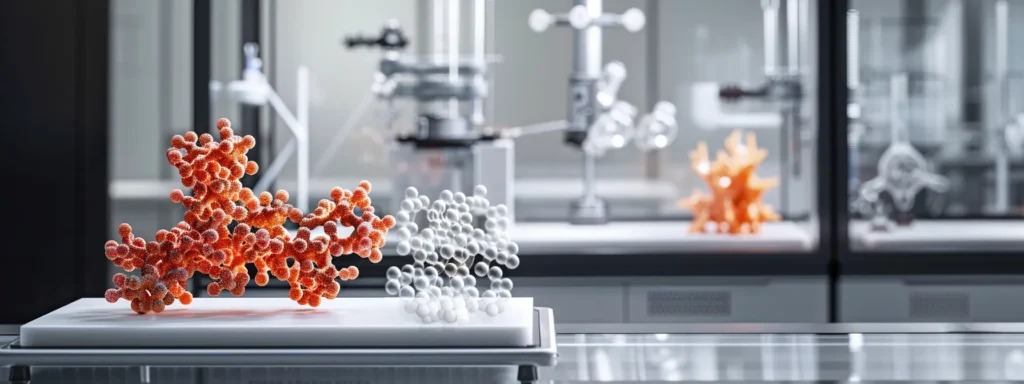
HHC vs THC: Key Differences Explained
When considering cannabis options, many people wonder about the differences between HHC and THC. This article will clarify these distinctions by examining their chemical makeup, psychoactive effects, and production processes. Readers will gain insight into the legal status of each compound and the potential implications for drug testing. Understanding these key differences can help individuals make informed decisions about their consumption choices and health benefits associated with HHC versus THC.
Key Takeaways
- HHC is a semi-synthetic derivative produced through hydrogenation of THC, altering its effects
- THC has psychoactive properties, while HHC is generally non-psychoactive and offers different benefits
- Different extraction methods impact the purity and potency of THC and HHC products
- Individual metabolism and usage frequency influence cannabinoid detection in drug tests
- Understanding the unique safety profiles of HHC and THC is vital for informed consumption
Understanding the Chemical Makeup of HHC and THC

The molecular structures of HHC and THC differ significantly, affecting their stability and shelf life. Hydrogenation modifies THC, yielding HHC and altering its potential effects, particularly through the route of administration. Understanding these differences, alongside the natural occurrence of THC versus the semi-synthetic production of HHC, sheds light on their roles as metabolites in managing conditions such as inflammation. This section will clarify these aspects, offering practical insights into their similarities and distinctions.
Comparing the Molecular Structures
The molecular structures of HHC (hexahydrocannabinol) and THC (tetrahydrocannabinol) vary in their carbon arrangements, which contributes to their distinct effects on the body. THC is known to have a double bond in its structure, while hydrogenation transforms this double bond in THC to create HHC, resulting in a more stable compound. This stability can lead to different interactions in the body, making HHC potentially beneficial for individuals seeking alternative options for conditions such as bipolar disorder or sleep issues.
Research indicates that the structural variations between HHC and THC also influence their bioavailability when consumed as oil or through other methods. HHC’s hydrogenated composition could alter its absorption rate, which may yield effects that differ from those of THC in managing symptoms like anxiety or sleep disorders. Understanding these molecular differences empowers consumers to make informed choices based on their specific health needs:
| Compound | Structure | Stability | Potential Effects |
|---|---|---|---|
| THC | Double bond present | Less stable | Psychoactive effects, potential anxiety relief |
| HHC | No double bond (hydrogenated) | More stable | Non-psychoactive, potential benefits in sleep and mood regulation |
How Hydrogenation Modifies THC to Create HHC
Hydrogenation is a chemical process that modifies THC to produce HHC. This transformation involves the addition of hydrogen atoms, resulting in the removal of the double bond present in THC’s structure. The method, which can be traced back to chemist Roger Adams, enhances the stability of the compound. For consumers looking for alternatives to traditional methods of managing stress or symptoms of opioid use disorder, HHC may offer a viable option as its altered structure influences how the body absorbs and interacts with it, particularly when used in tinctures or inhalants.
This change in molecular structure alters HHC’s effects, making it non-psychoactive compared to THC, which is known for its mind-altering properties. HHC’s stability can lead to more consistent experiences for users, especially for those seeking relief from anxiety, sleep disorders, or other issues related to stress. Understanding hydrogenation’s role in this transformation is essential for individuals aiming to choose products that best suit their health and wellness needs.
Natural Occurrence Versus Semi-Synthetic Production Methods
THC is a naturally occurring chemical compound found in the cannabis plant, while HHC is a semi-synthetic derivative created through hydrogenation. This process alters THC’s structure, making HHC distinct in its properties and effects. The Food and Drug Administration has yet to fully evaluate the implications and safety of these compounds, particularly concerning aspects like weight loss and potential side effects, such as dizziness.
Understanding the difference between natural and semi-synthetic production methods can help consumers make informed choices about their health. While THC might appear in drug tests through urine analysis, HHC’s semi-synthetic nature raises questions about its detection and impact on wellness. Both compounds serve different roles in managing various conditions, underscoring the importance of knowing which option aligns with individual health goals:
- THC is a natural compound from the cannabis plant.
- HHC is synthesized from THC through hydrogenation.
- Regulatory assessments are ongoing, with varying implications for health.
- Consumer awareness of potential effects is essential for safe use.
Structural Impact on Compound Stability and Shelf Life
The presence of a double bond in THC contributes significantly to its compound stability and shelf life. This characteristic makes THC less stable compared to HHC, which undergoes hydrogenation to eliminate the double bond, resulting in a more resilient compound. For instance, HHC’s enhanced stability allows it to maintain its integrity under various conditions, making it potentially more suitable for patients seeking consistent mood regulation over time.
The Drug Enforcement Administration has not established specific guidelines for HHC’s shelf life, which leaves users relying on manufacturers for accurate product descriptions. With ultraviolet exposure potentially affecting the integrity of both compounds, consumers should consider proper storage methods that can prolong the effectiveness of THC and HHC. Understanding these structural differences aids individuals in selecting the best options for their health needs, particularly when facing drug tests that may influence the choice of product used.
Comparing Psychoactive Effects and Potency Levels

This section focuses on comparing the psychoactive effects and potency levels of HHC and THC. It examines how HHC potency measures up against delta-9 THC, along with the subjective experiences reported by users. Differences in onset time and duration of effects will be detailed, as well as how each isomer interacts with endocannabinoid receptors in the brain. Insights regarding their analgesic properties will also be highlighted, providing valuable information for those considering options for pain management.
Gauging HHC Potency Relative to Delta-9 THC
When comparing the potency of HHC to delta-9 THC, it is essential to note that HHC may exhibit different effects on cognition and overall well-being due to its unique structure. Users have reported varying experiences, indicating that while HHC can provide relief from conditions such as disease-related nausea and pain management, it may not deliver the same intensity of psychoactive effects typically associated with delta-9 THC. This difference can influence how individuals choose between the two compounds based on their specific therapeutic needs and tolerance levels.
Furthermore, consumers should consider the importance of obtaining a certificate of analysis for HHC products, as it provides valuable information about potency and safety. A reliable analysis ensures that patients receive effective dosage tailored to their requirements, helping to address concerns related to pain management or cognitive function. Understanding the varying degrees of potency can empower individuals to make informed choices about which compound is best suited for their health concerns.
Contrasting the Subjective Experiences Reported by Users
Users of HHC and THC have reported distinct subjective experiences tied to the unique chemical structures of these cannabinoids. While THC is known for its potent psychoactive effects, many individuals notice that HHC tends to produce a milder experience, potentially due to its different interaction with cannabinoid receptors in the brain. For those seeking relaxation without the intensity associated with THC, HHC may offer a preferable alternative, particularly for managing stress or anxiety without overwhelming effects.
The terpene profile accompanying each compound also plays a significant role in shaping user experiences. Terpenes can enhance the efficacy of cannabinoids, influencing everything from aroma to therapeutic outcomes. Consumers often explore HHC for its potential sedative properties, especially in managing sleep disorders, while THC is frequently sought for its stronger euphoric effects during social situations. Understanding these differences can guide users in selecting the cannabinoid that best meets their health and wellness goals.
Duration and Onset Time Differences Between HHC and THC
The duration and onset time of effects for HHC and THC can vary significantly due to their differing chemical compositions and pharmacology. Anecdotal evidence suggests that HHC may produce effects that manifest at a slower onset compared to THC, which often delivers quicker psychoactive results. This difference can influence how individuals choose to use each compound, particularly in managing immediate symptoms of anxiety or pain relief.
How Each Cannabinoid Interacts With Endocannabinoid Receptors
Hexahydrocannabinol (HHC) and tetrahydrocannabinol (THC) interact with the endocannabinoid system by binding to cannabinoid receptors in the brain. THC primarily targets the CB1 receptors, leading to its well-known psychoactive effects, which can include euphoria but may also lead to experiences of increased anxiety or vomiting in some users. In contrast, HHC’s interaction with these receptors is less pronounced, often resulting in a more balanced effect that appeals to those seeking relief without the intensity associated with traditional drug use.
This distinction in receptor interaction is crucial for individuals concerned about addiction or adverse side effects. While THC can produce a strong high that may contribute to dependency, HHC’s milder effects allow users to consume it more comfortably, possibly through tinctures or edibles taken by mouth. For those managing conditions like chronic pain or nausea, understanding how HHC and THC interact with the body’s endocannabinoid system can assist in making informed decisions tailored to their health needs.
Examining Origins and Production Processes

THC is derived directly from cannabis plants, making it a natural active ingredient known for its effects on relaxation and metabolism. In contrast, HHC is created through laboratory synthesis, raising important considerations regarding purity and quality control measures. This section will delve into the production processes of both compounds, including the implications of using tetrahydrocannabiphorol and cannabigerol, ensuring consumers understand the quality factors associated with THC extracts and HHC products.
THC Derivation Directly From Cannabis Plants
Tetrahydrocannabinol (THC) is a naturally occurring compound extracted directly from cannabis plants, known for its significant role in affecting human perception and interacting with the endocannabinoid system. This process of derivation involves harvesting the flowers and leaves of the cannabis plant, which contain high concentrations of THC. As regulatory frameworks around cannabis continue to evolve, the emphasis on sourcing and processing THC responsibly becomes crucial for ensuring quality and safety in products aimed at medical and recreational users alike.
The cultivation practices and chemical processes involved in THC extraction play a vital role in determining the potency and effectiveness of the final product. Methods such as solvent extraction and CO2 extraction are commonly utilized to isolate tetrahydrocannabinol from the plant material. Understanding these production techniques and their impact can help consumers make informed choices about the products they use and their potential effects on health and wellness:
| Extraction Method | Process Description | Potential Benefits |
|---|---|---|
| Solvent Extraction | Uses solvents like ethanol to dissolve THC from plant matter. | Efficient in yielding high concentrations but may leave traces of solvents. |
| CO2 Extraction | Employs carbon dioxide under high pressure to extract THC. | Results in a pure extract, free from harmful solvents. |
The Laboratory Process for Synthesizing HHC
The laboratory process for synthesizing HHC begins with tetrahydrocannabinol (THC), a naturally occurring cannabinoid. This process involves hydrogenation, where hydrogen atoms are added to the THC structure, removing the double bond present in THC. This alteration enhances HHC’s stability and may impact how it interacts with cannabinoid receptor 1 in the body, influencing feelings of relaxation and appetite regulation.
During synthesis, specialized equipment and controlled conditions ensure the purity and safety of the final product. Accurate statistics on potency and bioavailability are critical as consumers increasingly seek alternatives for managing conditions like anxiety or appetite changes. As awareness grows, understanding the laboratory methods behind compounds like HHC can aid in making informed choices regarding health insurance coverage for cannabinoid therapies.
| Step | Description | Significance |
|---|---|---|
| Extraction | Starting with THC from cannabis plants. | Natural source of compounds for synthesis. |
| Hydrogenation | Adding hydrogen to THC to modify its structure. | Increases stability and alters potential effects. |
| Purification | Using specialized techniques to ensure product safety. | Critical for consumer confidence and health applications. |
Purity and Quality Control Measures for HHC Products
Purity and quality control are essential components in the production of HHC products, as consumers seek reliable options for stress management and overall wellness. Manufacturers must implement stringent testing processes to ensure that products are free from harmful contaminants and accurately labeled in terms of dosage. Regular quality assessments help guarantee that the HHC formulations available on the market effectively interact with the nervous system, particularly for individuals looking for alternatives to traditional medication.
Moreover, understanding the production process can assist users in making informed choices about their health. When selecting HHC products, consumers should look for those that provide a certificate of analysis, indicating the contents and purity levels, which assures that their doses are consistent and safe. These measures foster trust, further encouraging those using HHC as a potential aid for conditions related to dopamine release and stress management:
- Quality control measures are critical for ensuring product safety.
- Certificates of analysis demonstrate the purity and dosage of HHC products.
- Transparent production processes promote consumer trust and informed decisions.
Quality Considerations Specific to THC Extracts
Quality considerations for THC extracts are paramount for consumers seeking effective pain management solutions. One key aspect is ensuring that products are free from harmful contaminants, as impurities can affect both safety and therapeutic outcomes. For instance, certain extraction methods can leave behind residual solvents, which may pose risks for individuals, particularly those with sensitivities, and could be detrimental if detected in a urine test.
Furthermore, the potency and purity of cannabinol in THC extracts can significantly influence their efficacy as a sedative. Variability in product quality can lead to inconsistent experiences, sometimes causing issues like tachycardia or heightened anxiety in susceptible users. By prioritizing extracts that undergo rigorous quality control and provide transparent information regarding cannabinoid concentrations, consumers can make more informed choices tailored to their health needs and overall wellness goals.
Navigating the Legal Landscape for HHC and THC

The legal status of HHC and THC varies significantly across jurisdictions, influenced by federal classification following the 2018 Farm Bill. Specific regulations in states like Illinois impact HHC access, while different laws govern various THC forms. Current legal ambiguities regarding these compounds may lead to potential changes, affecting aspects such as shelf life, controlled substances, and consumer knowledge surrounding weight and memory effects.
Federal Classification Following the 2018 Farm Bill
The 2018 Farm Bill significantly impacted the legal landscape for HHC and THC by redefining the classification of hemp-derived products. Under this legislation, products containing less than 0.3% delta-9 THC are considered legal on a federal level, leading to an increase in both the availability and usage of marijuana compounds, including HHC. This change has prompted chemists to explore the synthesis of various cannabinoids, providing consumers with innovative options while raising questions regarding the potency and potential side effects of these substances.
As HHC and THC enter the market under varying state regulations, understanding their legal status is critical for consumers. While THC’s psychoactive effects can sometimes induce feelings of paranoia, HHC is generally regarded as non-psychoactive, presenting an alternative for those seeking relief without the same intensity. Navigating the complexities of how these compounds interact with receptors in the body can empower consumers to make informed choices, addressing their health needs while remaining compliant with existing laws.
State-Specific Regulations Impacting HHC Access
The legal landscape surrounding HHC and THC can vary considerably from state to state, impacting patient access to these cannabinoids. Some states have embraced the use of HHC, recognizing its potential benefits while establishing regulations to ensure safety and quality in products available to consumers. In contrast, other jurisdictions may impose strict restrictions or outright prohibitions on HHC, creating a risk for patients seeking alternative therapies.
Understanding these state-specific regulations is crucial for patients and consumers who wish to navigate the complexities of HHC and THC access effectively. Individuals must be aware of their state laws regarding both compounds, as failing to do so could lead to unintended legal consequences or limited treatment options. Maintaining updated knowledge of the evolving regulatory environment can empower patients to make informed decisions regarding their health management strategies:
- Patients must consider their state’s stance on HHC and THC.
- Regulations can affect product availability and safety.
- Awareness of legal risks is essential for informed choices.
State Laws Governing Various Forms of THC
The legal framework surrounding various forms of THC is complex and varies significantly by state. Some regions have fully legalized THC for both medical and recreational use, while others may restrict its application to medical contexts only, typically requiring prescriptions. This inconsistency can create challenges for consumers seeking access to THC products, as they must navigate local regulations to ensure compliance while managing their health needs.
Additionally, the emergence of new THC formulations, like delta-8 and delta-10, has further complicated the legal landscape, prompting some states to impose specific regulations or outright bans. It is crucial for individuals to stay informed about their state’s specific laws regarding THC, as penalties for non-compliance can be severe. Understanding these nuances helps consumers make safe and informed choices about THC products and their therapeutic benefits.
Current Legal Ambiguities and Potential Future Changes
The legal status of HHC and THC continues to evolve, leading to ambiguity in how these compounds are regulated across different regions. As federal legislation defines hemp-derived products, states vary widely in their specific laws regarding HHC and THC, which can impact access for users seeking therapeutic benefits. Consumers must stay informed about their local regulations to avoid unintentional violations and to ensure they can access suitable and safe products for their needs.
Recent discussions surrounding cannabis regulation suggest that future changes may include clearer guidelines on the legality of both HHC and THC. As more states recognize the medicinal properties of these compounds, there could be shifts toward more permissive laws and standardized manufacturing practices. Engaging with local representatives and advocating for responsible policies can help consumers influence future developments in cannabinoid accessibility and regulation.
Drug Testing Implications for HHC Versus THC Consumption

The detection of THC metabolites in standard drug tests is a critical consideration for users of cannabis products. While HHC is less commonly addressed in these tests, there are still questions about its potential to trigger positive results. Understanding metabolite formation and detection times, as well as the variables affecting cannabinoid detection, will provide valuable insights into the implications of HHC versus THC consumption concerning drug testing.
This overview sets the stage for a deeper examination of how THC metabolites are identified, the likelihood of HHC causing a positive test, and the various factors that influence the detection of cannabinoids in urine and other testing methods.
Standard Drug Test Detection of THC Metabolites
Standard drug tests typically screen for THC metabolites, primarily focusing on delta-9 THC, which is known for its psychoactive effects. When consumed, THC is metabolized in the liver, producing several metabolites that remain detectable in urine for varying periods, usually from a few days to several weeks, depending on frequency of use and individual metabolism. Therefore, individuals using cannabis products may face positive drug test results, raising concerns especially for those who partake for therapeutic purposes.
While HHC is less commonly analyzed in standard drug tests, there is ongoing debate regarding its potential to produce false positives for THC metabolites. Users should be aware that, even though HHC is a semi-synthetic compound that might not be directly tested, its similarity to THC could lead to unintended consequences during screenings. As awareness around cannabinoid consumption grows, understanding the implications of using HHC versus THC is essential for those who may face drug testing in professional or personal contexts.
Likelihood of HHC Triggering Positive Drug Test Results
The likelihood of HHC triggering positive drug test results remains a topic of debate among users and professionals. While HHC is structurally different from THC, its metabolite profile may still resemble that of THC, particularly in some standard drug tests designed to detect delta-9 THC. As a result, individuals using HHC could potentially face false positives due to the chemical similarities and the nature of how these compounds are metabolized in the body.
Understanding Metabolite Formation and Detection Times
Understanding how metabolites form and their detection times is crucial for anyone using HHC or THC. When THC is consumed, it is metabolized into various compounds in the liver, primarily resulting in THC-COOH, which can remain in the body for several days to weeks, depending on factors such as frequency of use and individual metabolic rates. This extensive detection window can lead to potential complications for individuals subject to drug testing.
For HHC users, there is less clarity regarding its detection in standard drug tests, as it is not typically included in standard screenings. However, because HHC is chemically similar to THC, it is important to consider that some tests may still flag it as a THC metabolite. Users should be aware of these possibilities and may want to consult with their healthcare provider or the testing entity for clarity on testing protocols and any implications for their specific situations:
- THC is metabolized into several compounds, influencing detection times.
- Regular cannabis users may face longer detection periods during drug tests.
- HHC’s detection in tests is uncertain, but similarities to THC raise concerns.
Variables That Affect Cannabinoid Detection in Tests
Several factors influence cannabinoid detection in drug tests, particularly when distinguishing between HHC and THC. Individual metabolism plays a critical role, as some people process cannabinoids more efficiently, leading to quicker clearance from the system. Additionally, frequency of use significantly impacts detection times; regular users may have cannabinoids stored in fat cells longer, resulting in extended detection windows.
The sensitivity of drug tests also varies, affecting the likelihood of detecting compounds like THC and HHC. Many standard drug tests focus on THC metabolites, primarily delta-9 THC, but may not account for HHC. However, due to structural similarities, HHC could still evoke false positives on certain tests. Staying informed about testing protocols and considering the implications of cannabinoid consumption is essential for individuals undergoing workplace or legal screenings.
Potential Applications and Safety Considerations

Early research into the therapeutic uses for HHC and THC reveals promising potential applications in managing various health conditions. While HHC may offer benefits with fewer side effects, common adverse reactions from THC usage present safety considerations for users. This section will outline the emerging therapeutic possibilities of HHC and THC, highlight common side effects associated with HHC, known adverse reactions from THC, and summarize their safety profiles.
Early Research Into Therapeutic Uses for HHC and THC
Early research into the therapeutic uses of HHC and THC reveals their potential in treating various health conditions. For instance, THC has been widely studied for its effectiveness in managing pain, nausea, and appetite stimulation, particularly for patients undergoing chemotherapy. HHC, on the other hand, shows promise as a non-psychoactive alternative for individuals seeking relief from anxiety and sleep disorders without the intense effects associated with THC.
As the research progresses, understanding the unique properties of each compound can aid in addressing specific patient needs. Preliminary studies suggest that HHC may provide similar benefits to THC while offering a gentler experience, making it suitable for those who may be sensitive to psychoactive compounds. This highlights the importance of continuing research to fully explore the applications and safety profiles of both cannabinoids, empowering consumers to make informed decisions about their health options.
Common Side Effects Associated With HHC Intake
Common side effects associated with HHC intake may include mild drowsiness, changes in mood, or stomach discomfort. Although many users report a gentler experience compared to THC, it is essential to be aware that individual reactions can vary widely. Monitoring one’s response to HHC is crucial, particularly for those using it for anxiety or sleep assistance, as these effects could potentially impact daily activities.
While HHC is often considered non-psychoactive, some individuals may still experience heightened sensitivity to its effects, especially if taken in larger doses. Understanding these potential side effects can empower users to adjust their intake accordingly, ensuring a safe and effective approach to wellness. For those considering HHC as an alternative for managing stress or sleep issues, staying informed about possible reactions is key to maximizing its benefits while minimizing any adverse effects.
Known Adverse Reactions From THC Use
Known adverse reactions from THC use can include anxiety, paranoia, and short-term memory impairment. These effects are particularly notable in inexperienced users or those who consume high doses. Understanding these potential reactions is critical for individuals considering THC for therapeutic purposes, as it may lead to unintended consequences such as increased anxiety or irritability.
In some cases, individuals may experience physiological effects such as increased heart rate or dry mouth. These reactions can be particularly concerning for those with pre-existing conditions or sensitivities. Being aware of THC’s possible side effects allows users to approach consumption more cautiously, facilitating a more successful and safer experience tailored to their health goals.
Available Information on the Safety Profiles
Understanding the safety profiles of HHC and THC is essential for consumers considering these compounds for therapeutic applications. Current research indicates that while THC is known for its psychoactive properties, resulting in potential side effects such as anxiety or increased heart rate, HHC generally presents a milder profile. This difference in effects positions HHC as an appealing alternative for individuals seeking therapeutic relief with a reduced risk of severe adverse reactions.
Furthermore, ongoing studies aim to clarify the safety and efficacy of both cannabinoids in various health contexts. Early findings suggest that HHC may provide similar benefits as THC, but with fewer associated risks, making it a viable option for those managing issues like anxiety or sleep disturbances. Awareness of these safety profiles helps guide individuals toward suitable choices aligned with their health needs, ensuring a more informed approach to cannabinoid consumption:
| Compound | Safety Profile | Common Side Effects |
|---|---|---|
| THC | Psychoactive, potential for anxiety and heart rate increase | Increased anxiety, dry mouth, memory impairment |
| HHC | Non-psychoactive, generally milder side effects | Mild drowsiness, mood changes, stomach discomfort |
Conclusion
Understanding the differences between HHC and THC is crucial for consumers seeking informed choices about their health and wellness. HHC offers a non-psychoactive alternative with potential benefits for anxiety and sleep disorders, while THC is celebrated for its well-documented therapeutic effects alongside its psychoactive properties. Both compounds have unique structures that influence their stability, effects, and interactions within the body. By recognizing these distinctions, individuals can select the cannabinoid that best aligns with their needs, enhancing their overall well-being and making educated decisions regarding cannabis use.

